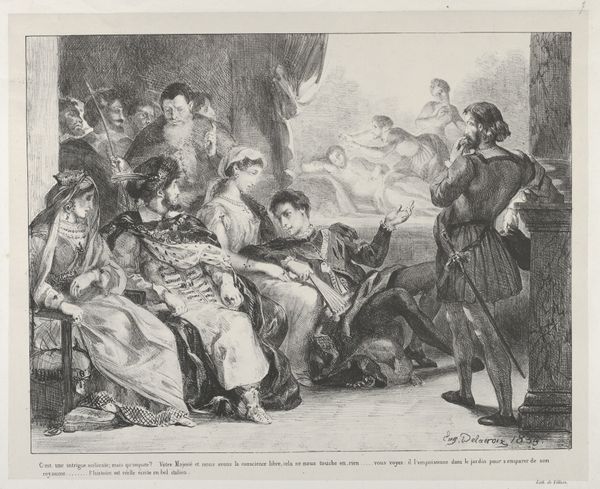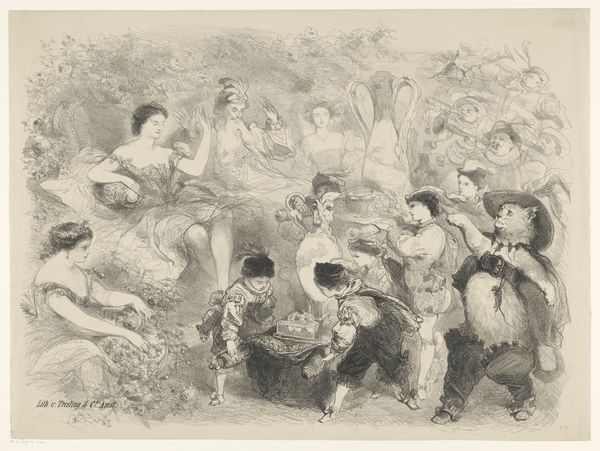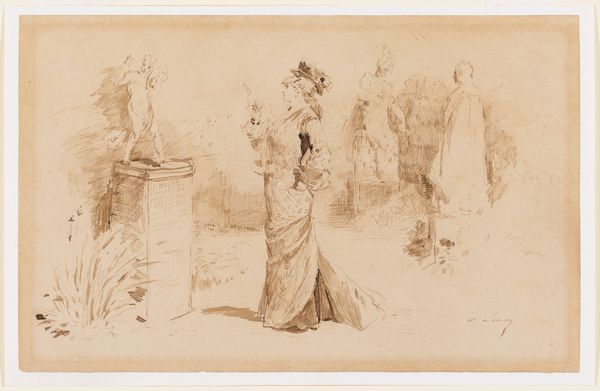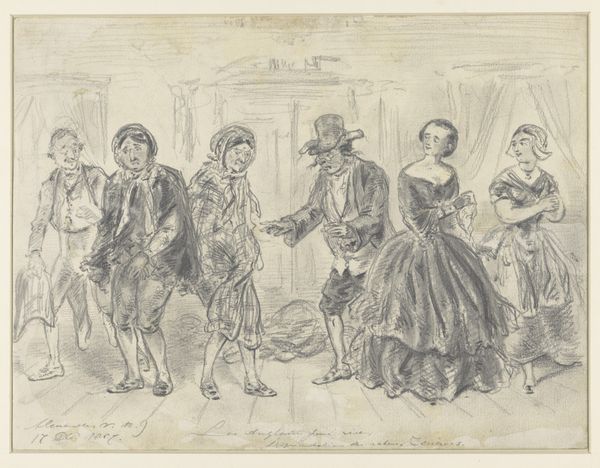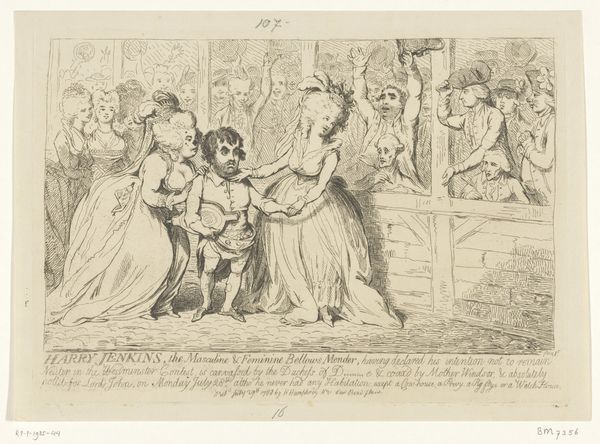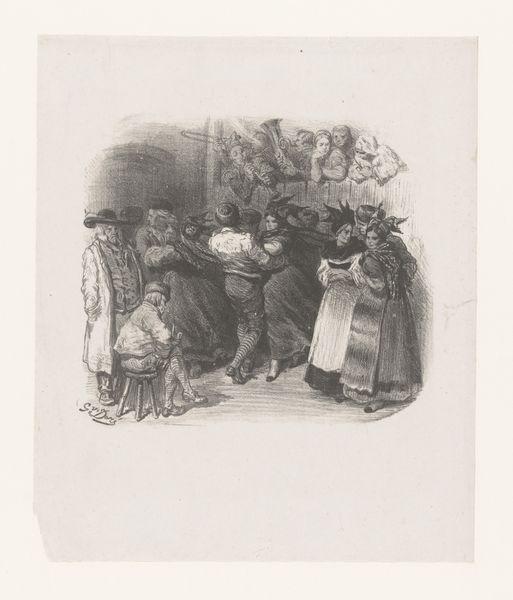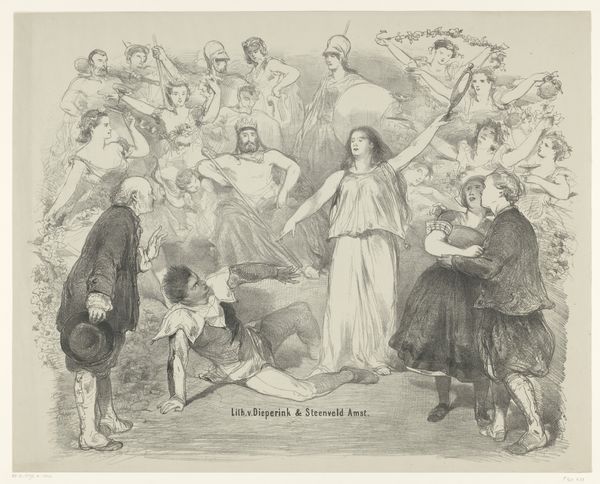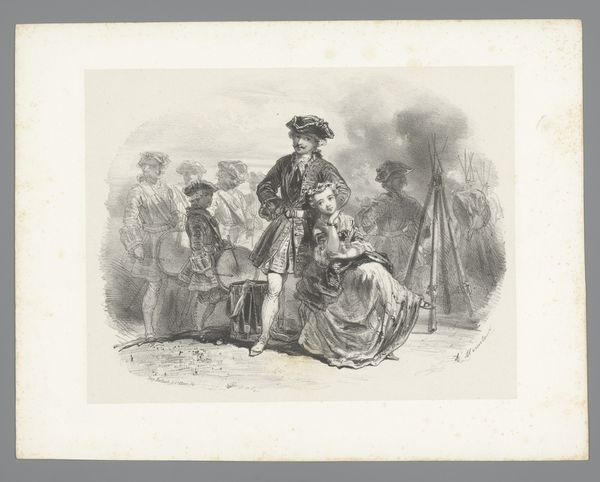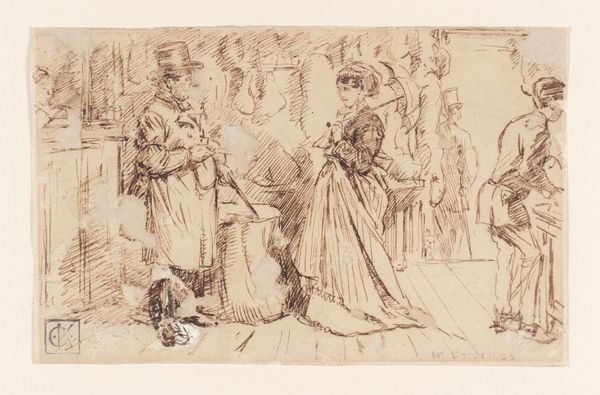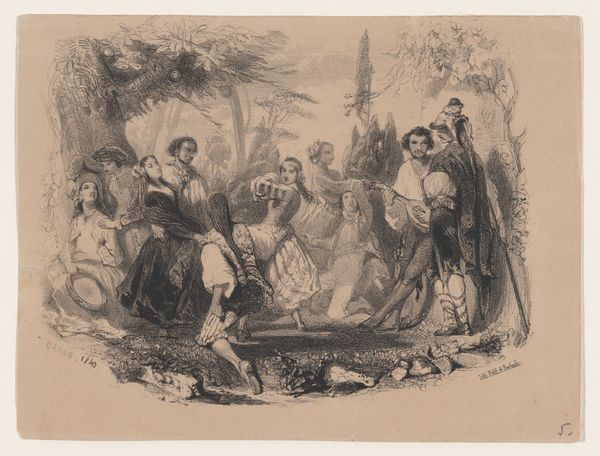
#
imaginative character sketch
#
light pencil work
#
quirky sketch
#
pencil sketch
#
personal sketchbook
#
idea generation sketch
#
sketchwork
#
ink drawing experimentation
#
pencil work
#
fantasy sketch
Dimensions: height 517 mm, width 665 mm
Copyright: Rijks Museum: Open Domain
Curator: This sketch, "Scène uit ballet Astaroth," was created by Charles Rochussen between 1865 and 1868. It's part of the Rijksmuseum's collection, a delicate rendering using graphite. Editor: My first impression is of organized chaos—a flurry of movement, sketched with such a light touch that it feels like a fleeting thought, or a quickly-jotted note on movement and the theater. Curator: That sense of a "fleeting thought" is pertinent. Rochussen's draftsmanship was in the service of genre and historical painting, but here we catch a glimpse into the broader cultural context of theatrical representation and its impact. The ballet Astaroth itself alludes to power dynamics of class and performance in society. Editor: Power dynamics certainly feel present, especially in the composition itself. Look at the various poses, the clustering of bodies, and the central figure's authoritative stance. Even though the work is preliminary, one senses a careful orchestration of form and line to create that tension. Curator: Indeed, and by further extension, gender. Note how the female dancers—despite being performers, presumably commanding attention—are rendered with this soft, almost yielding quality, kneeling with a cup on the floor as offering and subjugation, while the central figure looks bold and in command with the sword. Editor: Yes, the arrangement subtly underscores these disparities through the gaze and pose. Rochussen employs very minimal shading, which makes me focus on the articulation of form. Curator: Consider too how this artwork might have reflected—or even subtly critiqued—the societal roles ascribed to men and women. Rochussen gives us a glimpse into not just a ballet scene, but also how the social scripts were playing out in the cultural theater of the 19th century. Editor: So it’s a space for formal interpretation but equally fertile ground for societal commentary, which resonates even through its ethereal strokes. Curator: Exactly, which is precisely what makes Rochussen’s light and delicate draftsmanship deceptively profound in that his art captured society on the move. Editor: A sketch, yes, but the bare minimum to unlock profound narrative perspectives. Thank you for pointing those out to me.
Comments
No comments
Be the first to comment and join the conversation on the ultimate creative platform.
